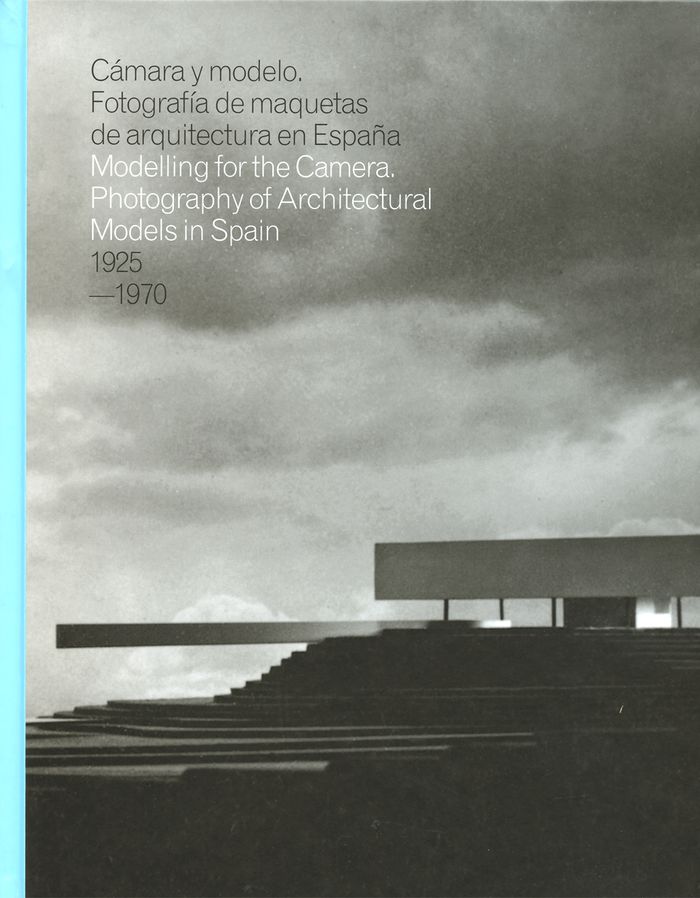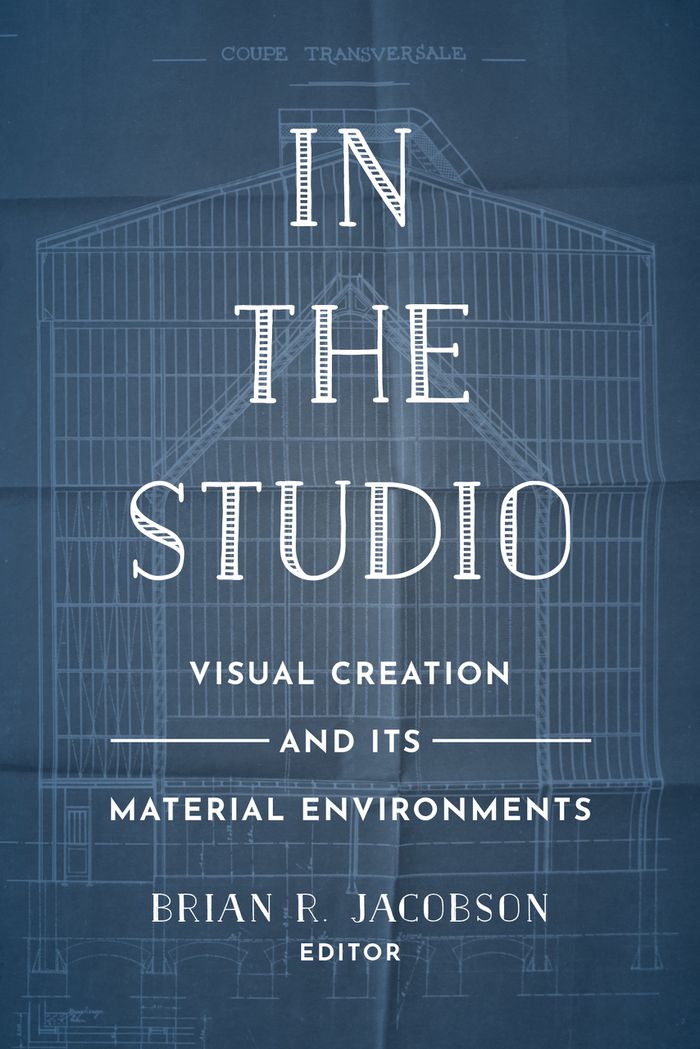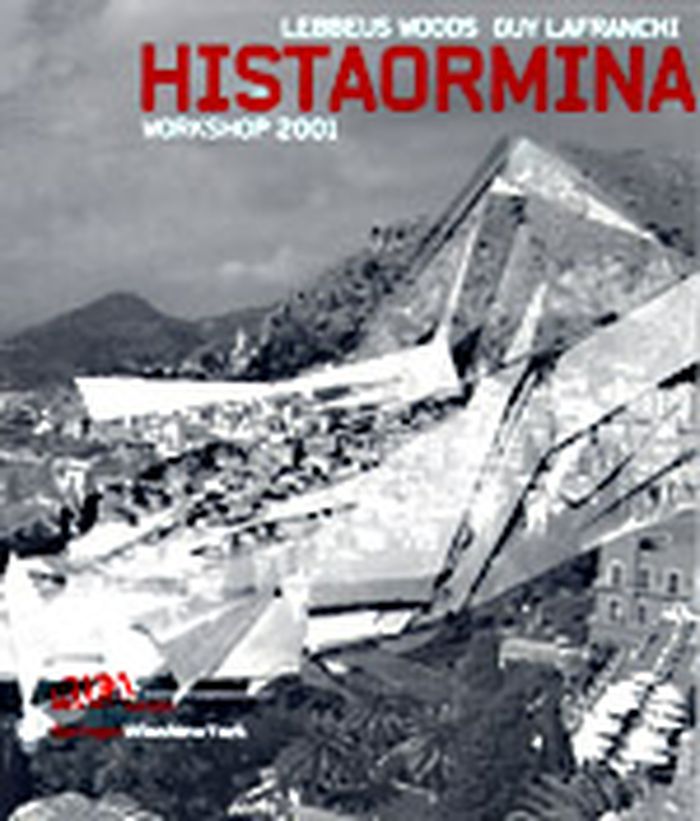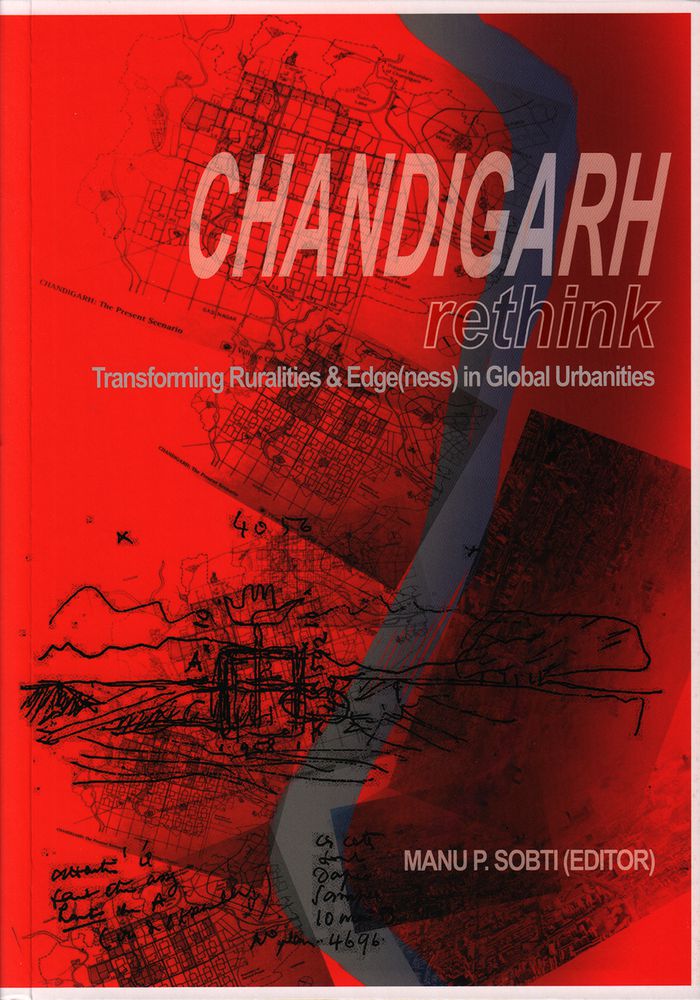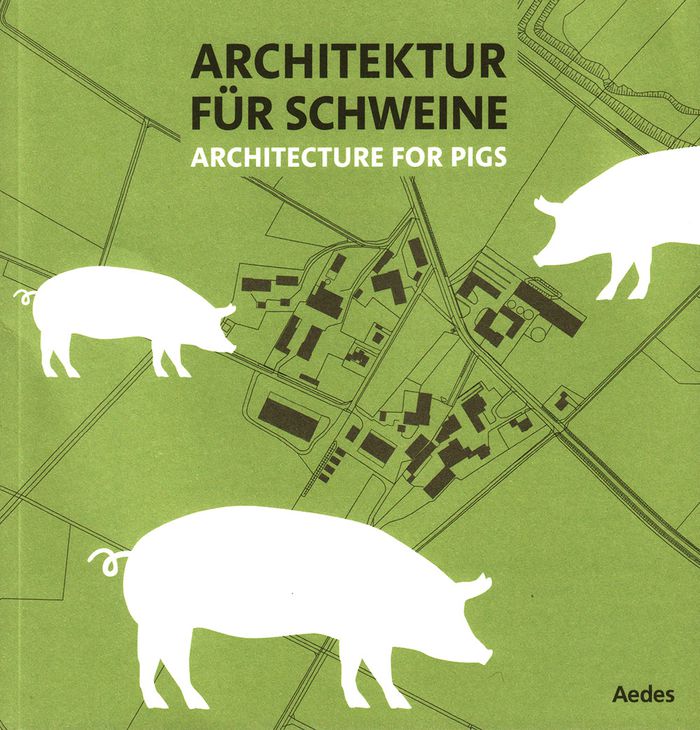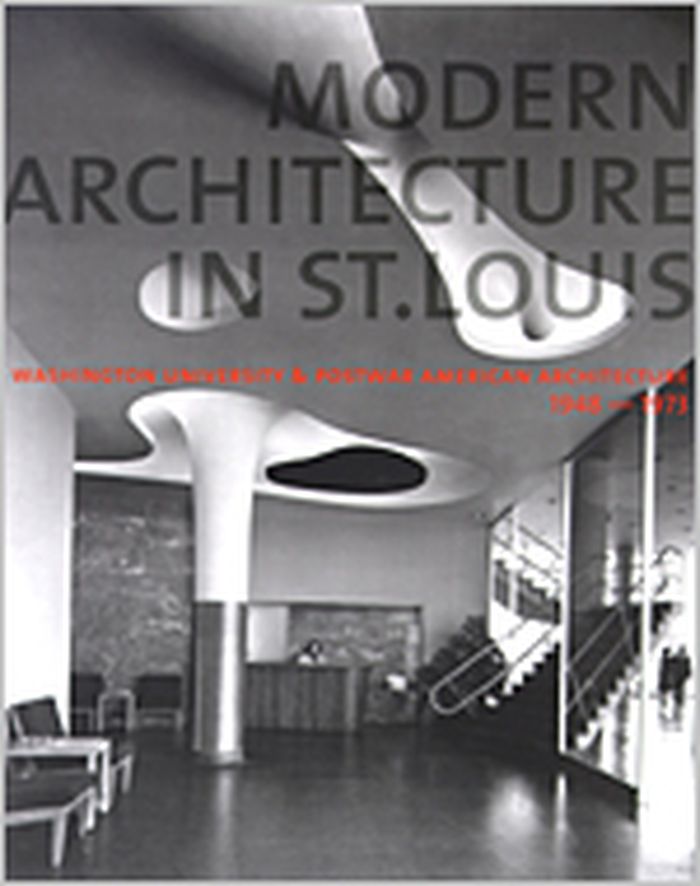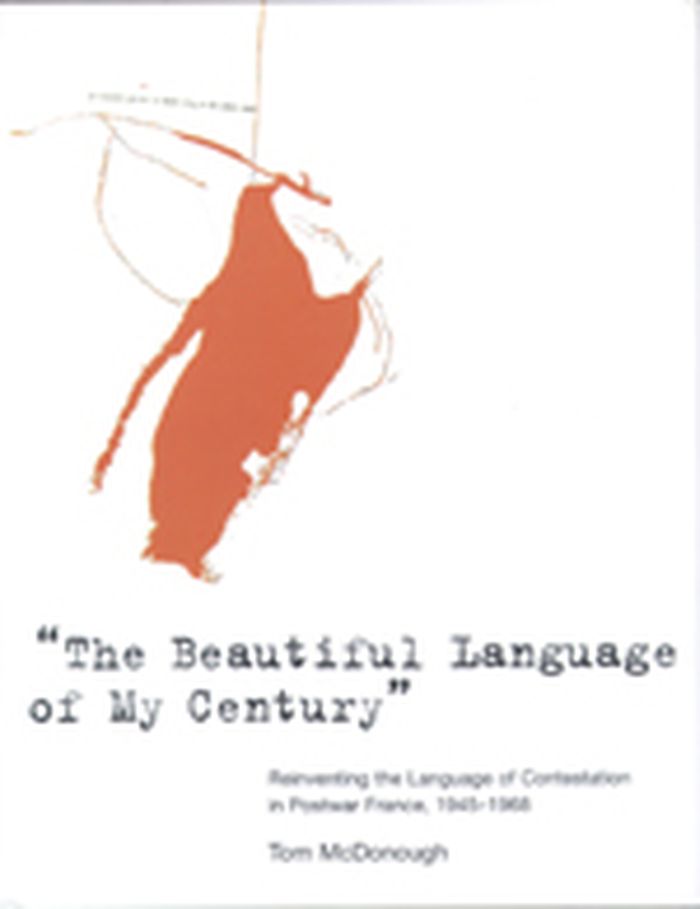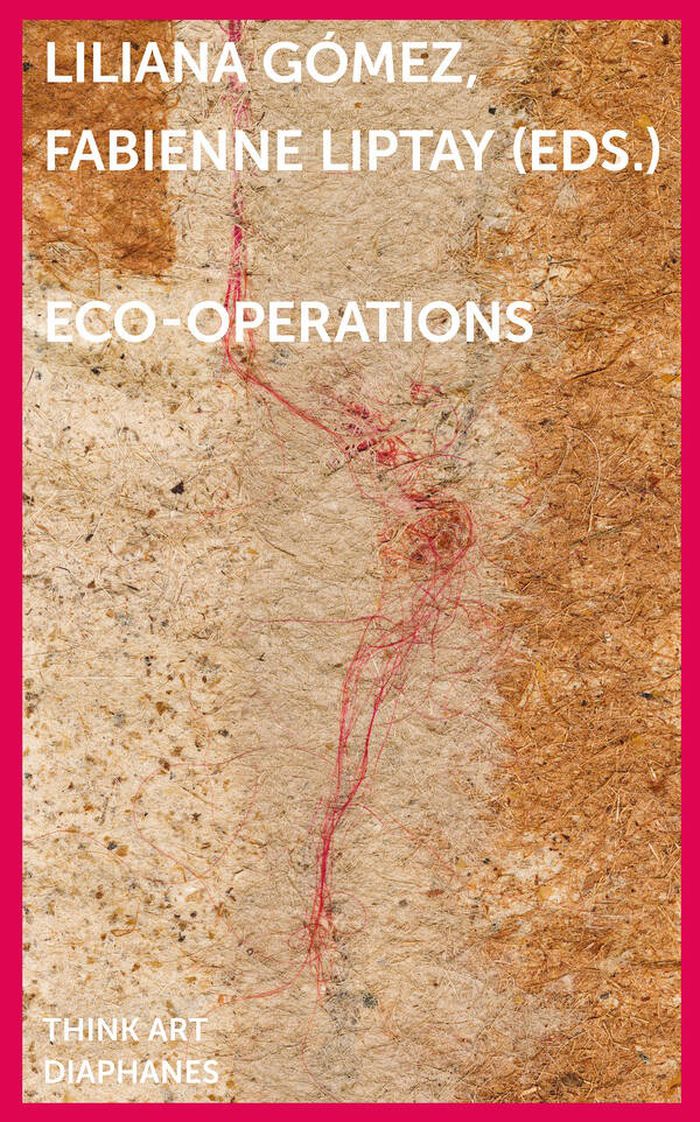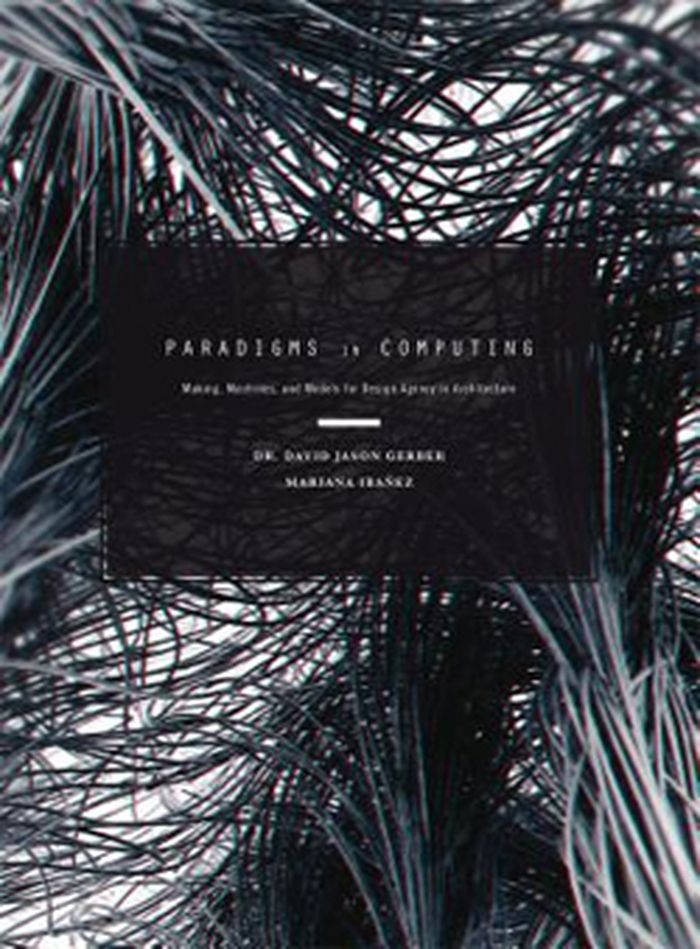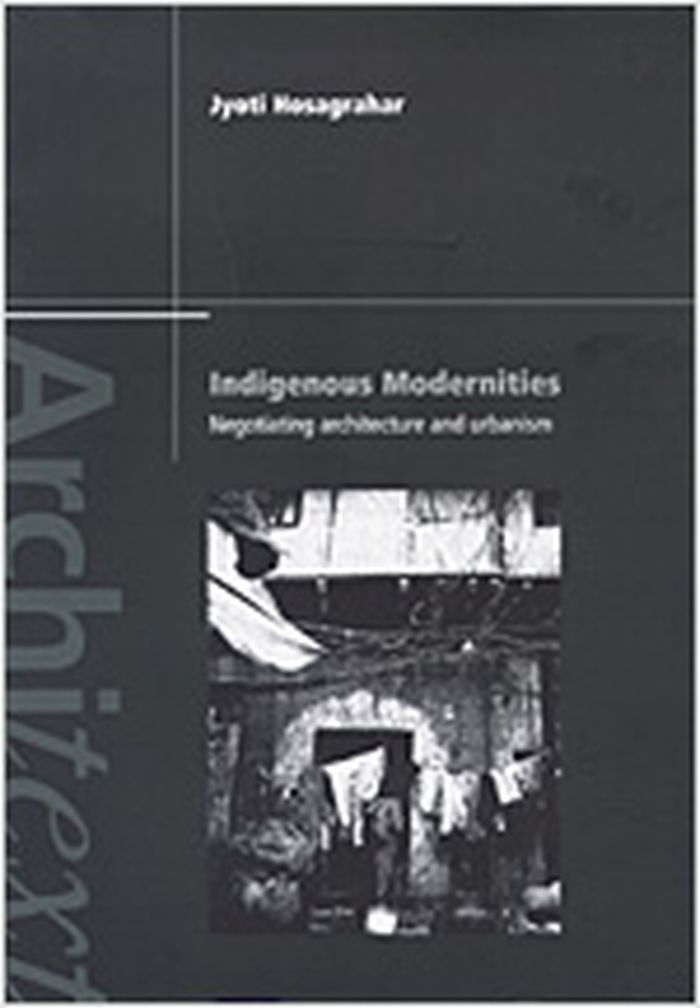Modelling for the camera
$57.50
(available in store)
Summary:
This publication pays tribute to two important systems of architectural representation: the model and the photograph. Rescuing over 100 original photographs of outstanding models - some eventually realized, and some that would remain unbuilt - from 20th-century Spain, this volume offers a modern, visual, critical and historiographical discourse on Spanish architecture(...)
Modelling for the camera
Actions:
Price:
$57.50
(available in store)
Summary:
This publication pays tribute to two important systems of architectural representation: the model and the photograph. Rescuing over 100 original photographs of outstanding models - some eventually realized, and some that would remain unbuilt - from 20th-century Spain, this volume offers a modern, visual, critical and historiographical discourse on Spanish architecture from this rich period after the First World War. Beyond the analysis of the models’ technical and compositional structure, the book includes sample pictures by photographers such as Francesc Català-Roca, Joaquín del Palacio (Kindel), Juan Pando, Martin Lladó, Oriol Maspons Ubiña Gomez and Ramón Massats, and architects such as José Manuel Aizpurúa, Alejandro de la Sota and Fernando Higueras.
Models
$46.95
(available to order)
Summary:
Studios are, at once, material environments and symbolic forms, sites of artistic creation and physical labor, and nodes in networks of resource circulation. They are architectural places that generate virtual spaces—worlds built to build worlds. On the outside, they have become icons of corporate identity, while on the inside, they have remained invisible in order to be(...)
In the studio: Visual creation and its material environments
Actions:
Price:
$46.95
(available to order)
Summary:
Studios are, at once, material environments and symbolic forms, sites of artistic creation and physical labor, and nodes in networks of resource circulation. They are architectural places that generate virtual spaces—worlds built to build worlds. On the outside, they have become icons of corporate identity, while on the inside, they have remained invisible in order to be seen. As such, they have actively faded into the background of critical discourse and into the margins of film and media history. Recovering their hidden role in the history of visual creation, ''In the studio'' demonstrates that when we foreground these worlds, we gain new insights into moving-image culture and the material, ecological, social, political, and economic dynamics that quietly mark the worlds on our screens.
Architecture and Film, Set Design
Histaormina
$28.00
(available to order)
Summary:
HISTAORMINA presents new concepts of architectural education and urban design through the lens of an intensive two-week workshop held in September of 2001. With the unique coastal hilltown of Taormina, Sicily as both subject and setting, the authors led a team of European and American students in an exploration that combined visual and conceptual design, historical(...)
Histaormina
Actions:
Price:
$28.00
(available to order)
Summary:
HISTAORMINA presents new concepts of architectural education and urban design through the lens of an intensive two-week workshop held in September of 2001. With the unique coastal hilltown of Taormina, Sicily as both subject and setting, the authors led a team of European and American students in an exploration that combined visual and conceptual design, historical references, critical discourse, and both local and global issues with innovative new methods of individual creativity and collaboration. The results are documented in an extensive series of photographs of experimental models and constructions and the working processes that produced them. These are accompanied by comments from the students and a text by the authors explaining the concepts behind this new approach and describing its implications for the future.
small format
$44.50
(available to order)
Summary:
"Chandigarh rethink" captures the rich, ongoing discourse on radically transforming urbanities within the Global South with specific reference to India's social, historical, economic and cultural repositioning. It examines urban edge 'figures' and their rural 'grounds', relevant not just to Chandigarh, but also to cities in general, while suggesting narrative strategies(...)
Chandigarh rethink: transforming ruralities & edeg(ness) in global urbanities
Actions:
Price:
$44.50
(available to order)
Summary:
"Chandigarh rethink" captures the rich, ongoing discourse on radically transforming urbanities within the Global South with specific reference to India's social, historical, economic and cultural repositioning. It examines urban edge 'figures' and their rural 'grounds', relevant not just to Chandigarh, but also to cities in general, while suggesting narrative strategies via provocative design studio design work. These introspections are framed within themed contributions from a globally recognized group of scholars who represent the diverse disciplines of architecture, planning, urban design, landscape ecologies and the humanities. As a topical publication on global urbanities transforming a 'signature' urban project, "Chandigarh rethink" anticipates the Buildings-Landscapes-Cultures (blc) program and SARUP's efforts to uniquely aligning urban research, pedagogy and critical design practice towards examining global urbanities that continue to defy normative urban analysis. Beyond serving as an exemplar for globally aware architectural schools nationwide and beyond, it is also directed to serve as an instructive primer for design students and instructors examining global urban sites.
Arch Middle East
$22.50
(available to order)
Summary:
An increasing group in contemporary society is rejecting agricultural production, as it exists today. Particularly prevalent, is the heated debate about conditions under which livestock is kept and slaughtered. Economic and ecological issues, animal and environmental protection, ethics and a (more) conscious meat consumption play an important role. The conflicts between(...)
Architecture for pigs / architektur fur schweine
Actions:
Price:
$22.50
(available to order)
Summary:
An increasing group in contemporary society is rejecting agricultural production, as it exists today. Particularly prevalent, is the heated debate about conditions under which livestock is kept and slaughtered. Economic and ecological issues, animal and environmental protection, ethics and a (more) conscious meat consumption play an important role. The conflicts between these aspects must be negotiated in the public discourse, raising the question of which role architecture can play to improve this condition. The exhibition "Architecture for pigs" presents solutions for a modern agricultural pork production that meet the new demands of today’s critical consumer. In 2016, the organisers of an architectural student competition (KTBL and Stiftung LV Münster) began their research for new perspectives on agricultural architecture, livestock and societal engagement with agriculture. With this exhibition, Aedes Architecture Forum kicks off its 40th anniversary program. It is a continuation of the exhibition series on the role of architecture in the development of rural regions.
Commercial interiors, Building types
Modern architecture in St. Louis : Washington University and postwar american architecture 1948-1973
$55.95
(available to order)
Summary:
The Gateway Arch casts its shadow across the Mississippi River and the city skyline of St. Louis, yet the history of architecture in that city stretches far beyond the towering "gateway to the West." Modern Architecture in St. Louis offers the first in-depth survey of the exciting evolution of modern architecture in the heart of the Midwest, an evolution that began during(...)
Modern architecture in St. Louis : Washington University and postwar american architecture 1948-1973
Actions:
Price:
$55.95
(available to order)
Summary:
The Gateway Arch casts its shadow across the Mississippi River and the city skyline of St. Louis, yet the history of architecture in that city stretches far beyond the towering "gateway to the West." Modern Architecture in St. Louis offers the first in-depth survey of the exciting evolution of modern architecture in the heart of the Midwest, an evolution that began during the flowering of mid-century American modernism. Established architectural scholars here explore the nationally and internationally significant aspects of modern architecture in St. Louis during the postwar period, with essays on subjects ranging from the creation of the Arch to the role played by the Washington University School of Architecture. Archival photographs and drawings augment the scholars' historical analyses, and statements by alumni and faculty of the School of Architecture, including Gyo Obata and Fumihiko Maki, are also featured. Modern Architecture in St. Louis is a valuable work of architectural history that unearths the critical contribution of St. Louis to American design and modernism. Eric Mumford is associate professor at the Washington University School of Architecture and author of The CIAM Discourse on Urbanism, 1928-1960.
History until 1900
$39.95
(available to order)
Summary:
In postwar France, the aesthetics of appropriation and collage gave cultural form to a struggle over meaning. A new wave of avant-garde experimentation used - or stole, plagiarized, and expropriated - elements from advertising, journalism, literature, art, and other sources of common discourse (the ironically named "beautiful language" of this book's title, itself an(...)
February 2007, Cambridge (MA)
The beautiful language of my century : reinventing the language of contestation in postwar France, 1945-1968
Actions:
Price:
$39.95
(available to order)
Summary:
In postwar France, the aesthetics of appropriation and collage gave cultural form to a struggle over meaning. A new wave of avant-garde experimentation used - or stole, plagiarized, and expropriated - elements from advertising, journalism, literature, art, and other sources of common discourse (the ironically named "beautiful language" of this book's title, itself an appropriation from Guy Debord's collaged Mémoires). Redeployed, often in startling or pointed juxtapositions, these elements took on newly oppositional meanings. A famous photograph taken inside the occupied Sorbonne in May 1968, for example, shows a massive academic painting altered by a clever cartoonish speech bubble that transforms the painting into a parody of itself and memorializes an event very different from the one captured by the original artist."The beautiful language of my century" describes the various forms of critical culture that culminated in the events of May 1968, and investigates the ways those forms have come down to us today. McDonough explores the montage practice developed by Guy Debord and his situationist colleagues under the name of détournement and its expression in the later fifties as a form of cultural theft. He addresses the influence of colonialism on these practices, examining a 1961 exhibit of torn posters of the Algerian War ("La France déchirée"), Godard's early film Le Petit Soldat, and Christo's Project for a Temporary Wall of Steel Drums. He discusses the French left's adoption in the mid-sixties of the "end of art" as a theoretical position and describes the leftist idea of the fête as a Rabelaisian and revolutionary upwelling of everything that is low. This influential conception, inspired equally by the American urban revolts of the sixties and the writings of theorists Marcel Mauss and Georges Bataille, coalesced into a new image of revolution, a new model of contestation, in the events of May 1968 - when the struggle over language and culture merged with a broader resistance to capitalist modernization.
Eco-operations
$88.00
(available to order)
Summary:
The climate change crisis has become part of aesthetic discourse and critical research in culture and the arts. Future-oriented, ecologically conceived possibilities for action are being explored by artists, curators, and scholars alike. eco-operations addresses these emerging aesthetic ecologies and new technologies of cooperation that both challenge and shape a(...)
Eco-operations
Actions:
Price:
$88.00
(available to order)
Summary:
The climate change crisis has become part of aesthetic discourse and critical research in culture and the arts. Future-oriented, ecologically conceived possibilities for action are being explored by artists, curators, and scholars alike. eco-operations addresses these emerging aesthetic ecologies and new technologies of cooperation that both challenge and shape a sustainable future, foregrounding interruptions, ruptures, disconnections, dissonances, exclusions, and allochronism. Moving beyond the concepts of “flow” and “network” as a single, coherent (ecological or technological) system, "eco-operations" instead emphasizes the frictions within asynchronously running systems. The infrastructures and formats of artistic production and exhibition play a central role here, as they themselves constitute ecosystems that invite and regulate processes of sharing and exchange. Artists and activists are embedded in these ecosystems, in which they simultaneously intervene when searching for alternative ways of creating collaborative practice. Bringing together scholars, artists, writers, and curators, and working across a range of disciplines, "eco-operations" explores this field of tension between global and local ecologies and aims to speculate on where dissonances imply both creative potential and political challenges.
Architecture ecologies
$94.95
(available to order)
Summary:
Paradigms in Computing: Making, Machines, and Models for Design Agency in Architecture brings together critical, theoretical, and practical research and design that illustrates the plurality of computing approaches within the broad spectrum of design and mediated practices. It is an interrogation of our primary field of architecture through the lens of computing, and yet(...)
Contemporary Architecture
December 2015
Paradigms in computing: making, machines and models for design agency in architecture
Actions:
Price:
$94.95
(available to order)
Summary:
Paradigms in Computing: Making, Machines, and Models for Design Agency in Architecture brings together critical, theoretical, and practical research and design that illustrates the plurality of computing approaches within the broad spectrum of design and mediated practices. It is an interrogation of our primary field of architecture through the lens of computing, and yet one that realizes a productive expanding of our métier’s definition and boundaries. It is a compilation that purposefully promotes architecture’s disciplinary reach and incorporations beyond the design and construction of buildings and cities. The book offers a glimpse into the wide range of positions and experiences that are shaping practice and discourse today. The work included in Paradigms in Computing is evidence that models for enquiry are many and proliferating. As digitalization and computation continue to infuse our processes with new tools and new design environments, some of the trends collected in this book will continue to be central to the production and speculation of architecture, and others will, in retrospect, be recognized as the seeds of new, or perhaps multiple, paradigms.
Contemporary Architecture
$58.50
(available in store)
Summary:
This book examines the ways in which a historic, and so-called 'traditional' city quietly mutated into one that was modern in its own terms not only in form but also in its use and meaning. Through a study of Delhi, the author challenges some prevalent dichotomies and myths in architecture and urbanism and identifies an interpretation of modernism that expands upon(...)
April 2005, London
Indigenous modernities : negotiating architecture and urbanism
Actions:
Price:
$58.50
(available in store)
Summary:
This book examines the ways in which a historic, and so-called 'traditional' city quietly mutated into one that was modern in its own terms not only in form but also in its use and meaning. Through a study of Delhi, the author challenges some prevalent dichotomies and myths in architecture and urbanism and identifies an interpretation of modernism that expands upon conventional understandings of it. Conventional discourse in the West defines modern as the antithesis of that which is 'not-modern' or is 'traditional.' Many scholars have debated the significance of the words and most agree that the very word 'tradition' was a modernist creation that variously implied backwardness, threatened by change, resistance to innovation. The first part of this book reflects on the transformations and discontinuities in built form and spatial culture and calls into question accepted notions of the static nature of what is normally referred to as 'traditional' and 'non-Western' architecture. The second part is a critical discussion of Delhi in the nineteenth and early twentieth centuries. It expands upon conventional understandings of modernity in a way that wrenches free the city's architecture and the society from the objectified realm of the exotic while also acknowledging cultural conditions of modernity and modern architecture outside the West. Stepping outside Western canons, this project looks at late nineteenth and early twentieth century architecture to include them in a conversation on architecture that has typically focused on Western Europe and North America. Finally, the author seeks out the 'indigenous modernities': the irregular, the uneven, and the unexpected in what uncritical observers might label a perfectly coherent 'traditional' built environment; or in the influence of local society and institutions on forms that appear modern by conventional standards in the West.
